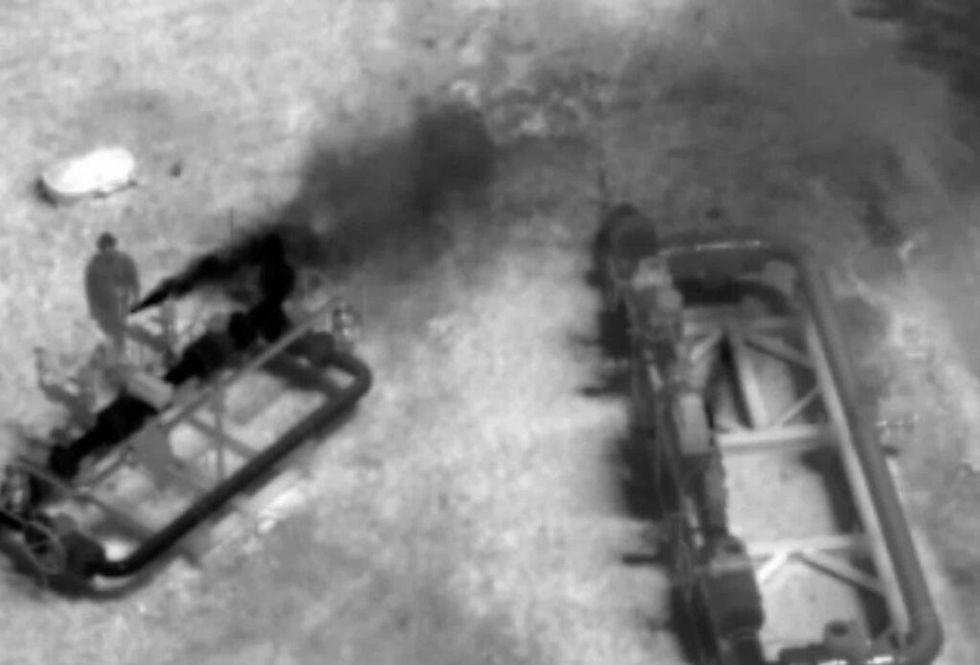Understanding 0000A Compliance in Oil and Gas and the role UAVs play.
- Brad
- Sep 27, 2023
- 3 min read
Updated: Oct 17, 2023
The oil and gas industry plays a critical role in powering economies and meeting energy demands worldwide. However, the extraction, transportation, and processing of oil and gas are inherently hazardous activities that require strict safety and compliance measures. Enter "0000A compliance" - a term not exclusive to aviation, but a set of regulations essential for various industries, including oil and gas. In this article, we'll explore the concept of 0000A compliance within the oil and gas sector and investigate how Unmanned Aerial Vehicles (UAVs) are becoming indispensable tools to ensure safety and regulatory adherence.
Understanding 0000A Compliance in the Oil and Gas Industry
0000A compliance, in the context of the oil and gas industry, signifies adherence to a rigorous set of safety and environmental regulations aimed at minimizing risks, protecting the environment, and ensuring the well-being of workers. Key aspects of 0000A compliance in the sector include:
1. Equipment Maintenance and Inspection:
Regular inspection and maintenance of equipment such as pipelines, drilling rigs, and processing facilities to prevent leaks, breakdowns, and accidents.
2. Environmental Protection:
Strict adherence to environmental regulations to prevent spills, emissions, and other forms of pollution, and to ensure the responsible management of resources.
3. Worker Safety:
Comprehensive safety protocols and training for workers to minimize accidents, injuries, and occupational hazards.
4. Reporting and Documentation:
Accurate and timely record-keeping of safety incidents, equipment maintenance, and regulatory compliance to demonstrate due diligence.
5. Emergency Response:
Preparedness for emergency situations such as oil spills or gas leaks, including the availability of response teams and equipment.
Achieving and maintaining 0000A compliance is paramount not only for the industry's reputation but also for the safety of its workers and the protection of the environment.
The Role of UAVs in Oil and Gas 0000A Compliance
UAVs, commonly known as drones, have emerged as a game-changer in the oil and gas industry's pursuit of 0000A compliance. Here's how UAVs are making a significant impact:
1. Aerial Inspections:
UAVs equipped with high-resolution cameras and advanced sensors can perform aerial inspections of equipment and infrastructure. They can access remote and hard-to-reach areas, reducing the need for risky human inspections.
2. Leak Detection:
Specialized UAVs equipped with gas sensors can detect methane and other harmful gas leaks quickly. Identifying and addressing leaks promptly helps prevent environmental disasters and ensures compliance with emissions regulations.
3. Environmental Monitoring:
UAVs can monitor and assess environmental conditions in and around oil and gas facilities. They can detect changes in air quality, water quality, and wildlife activity, helping companies take proactive measures to protect the environment.
4. Security and Surveillance:
UAVs can be used for security and surveillance purposes to deter trespassing and theft, ensuring the safety of critical infrastructure.
5. Emergency Response:
In the event of an emergency, UAVs can provide real-time situational awareness, guiding response teams and helping them assess the extent of the crisis. They can also deliver emergency supplies to remote locations.
6. Data Analysis:
The data collected by UAVs can be analyzed using artificial intelligence and machine learning algorithms to predict maintenance needs, optimize operations, and enhance safety protocols.
Challenges and Considerations
While UAVs offer immense benefits for 0000A compliance in the oil and gas industry, there are challenges to address:
Regulatory Compliance: UAV operations must adhere to aviation and environmental regulations, which may require specific permits and approvals.
Data Security: Protecting sensitive data collected by UAVs is critical, as it may include proprietary information and environmental monitoring data.
Training and Expertise: UAV operators need proper training and expertise to operate the technology safely and effectively.
Interoperability: Integrating UAVs into existing workflows and systems can be complex and requires careful planning.
Conclusion
In the oil and gas industry, where safety, environmental responsibility, and regulatory compliance are of paramount importance, UAVs are proving to be invaluable tools. These unmanned aerial vehicles excel in tasks ranging from equipment inspections and leak detection to environmental monitoring and emergency response. As technology continues to advance and regulatory frameworks adapt, the integration of UAVs into the oil and gas sector promises not only safer operations but also a more sustainable and compliant industry. UAVs are not just changing the way the industry operates; they are helping it evolve into a safer and more environmentally responsible field, essential for the future of energy production.


TDLAS ppm readings

TDLAS ppm readings

OGI Methane detection
















































































Comments